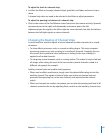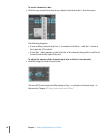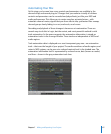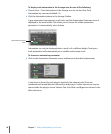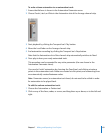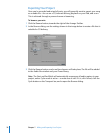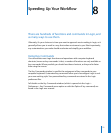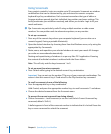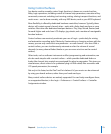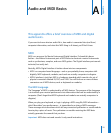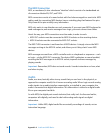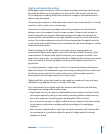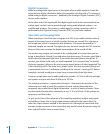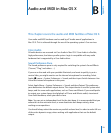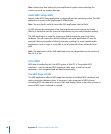
Chapter 8 Speeding Up Your Workflow 73
Using Control Surfaces
Any device used to remotely control Logic functions is known as a control surface.
Many Logic operations, including control of channel strip parameters, execution of key
commands, screenset switching, track arming, muting, soloing, transport functions, and
much more—can be done remotely, with any MIDI device, such as your MIDI keyboard.
More flexibility is offered by dedicated hardware controllers, however. Typically, these
devices will contain several channel strips—each with a fader, knob, and one or more
switches. Most also offer dedicated transport buttons: Play, Stop, Record, Rewind, and
Forward. Higher end units have LCD displays, jog wheels, and a number of reassignable
function buttons.
Control surfaces can massively accelerate your use of Logic—particularly for mixing
and automation recording tasks. Obviously, if automating or changing volume with the
mouse, you can only control this one parameter—on one channel—at a time. With a
control surface, you can simultaneously automate or alter the volume of several
channels (as many channel faders/knobs as you can move at a time on the control
surface).
Other tasks, such as software instrument or effect programming and automation, can
also be made simpler with a control surface—which provides dedicated faders or
knobs (the channel strip controls are reassigned) for plug-in parameters. This gives you
simultaneous, direct control of a synthesizer plug-in’s filter cutoff, filter resonance and
LFO speed parameters, for example.
Not only is this faster, but the “feel” and “mix balance” of your music can be enhanced
by using your hands and ears, rather than your hands and eyes.
Many control surface devices are natively supported. You can freely reconfigure these,
or unsupported devices, in the Logic > Preferences > Control Surfaces > Controller
Assignments window.



